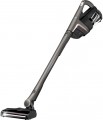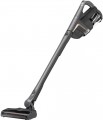The operating time of a battery-powered vacuum cleaner (see "Power supply") on a single battery charge.
Usually, the average operating time in normal mode is indicated here. Accordingly, in fact, the battery life of the vacuum cleaner may differ slightly from the claimed one, depending on the chosen application format. Nevertheless, the operating time indicated in the specifications is a fairly reliable indicator; it can be used both for a general assessment of battery life and for comparing the selected vacuum cleaner with other models.
Separately, we note that increasing battery life requires either the use of more capacious (and therefore more expensive and heavier) batteries or a decrease in engine power (and the efficiency of the unit as a whole). So it is worth looking specifically for a long working vacuum cleaner if these moments are outweighed by a long operating time.
The presence of
light-emitting diode (LED) lighting in the design of the vacuum cleaner.
Such lighting is placed on the working nozzle or close to it and illuminates the area being processed by the vacuum cleaner. Its main purpose is to provide convenience when working in dark places, such as under sofas/beds, dark corners, etc. At the same time, the lighting can be useful in normal brightness lighting: it well reveals dust and debris on smooth surfaces like linoleum or laminate.
As for the LED lighting vacuum cleaners themselves, most of them belong to one or another type of upright ones (see "Type") — it is in such units that this function is technically easiest to implement. It is also found in some conventional and handheld household vacuum cleaners. However, there are a few such models on the market, and they are not cheap due to additional design features. For example, in a conventional vacuum cleaner, for the lighting to work, not only a tube is required, but also a hose of a special design — with wiring to supply power to the LEDs.

